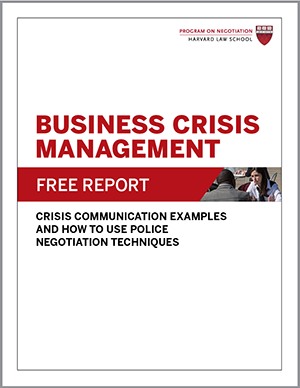
At the time, it seemed to be an example of coolheaded dealmaking in the midst of disaster. In 2009, hit hard by the 2008 financial crisis and changes in consumer preferences, U.S. automaker Chrysler was on the brink of collapse. The U.S. Treasury Department stepped in to run a crisis negotiation. In exchange for about $12 billion in federal loans, Chrysler entered bankruptcy and allowed its ownership to be divided.
A health-care trust for Chrysler union workers known as the voluntary employee beneficiary association (VEBA) gained 68% ownership in the company and a $4.59 billion note that eliminated the company’s health-benefit obligations to retirees. The Treasury Department took 10%; the Canadian government, 2%.
In a hasty crisis negotiation, Italian automaker Fiat was given 20% ownership and a stake in Chrysler’s board and management in exchange for small cars, engines, and technology. Fiat also negotiated an option to eventually acquire more of Chrysler. Overall, the crisis negotiation was believed to offer Chrysler a slim hope of recovery, and Fiat was portrayed as a white knight.
By 2011, however, the companies’ fortunes had reversed: Chrysler was turning a profit, and Fiat was struggling amid the European financial crisis. Hoping to save itself by merging with Chrysler, Fiat bought out the U.S. and Canadian governments’ stakes in Chrysler for $640 million.
The next year, Fiat exercised an option to buy 3.3% of Chrysler from VEBA. But Fiat and VEBA had differing valuations of Chrysler, based on whether to include the $4.59 billion note from the original bailout. In the original 2009 bailout deal, Treasury Department lawyers failed to address how the value of Chrysler should be determined, amounting to a “$4.5 billion drafting error,” writes Steven D. Solomon in the New York Times. The parties took their dispute to court and eventually agreed that Fiat would acquire all of VEBA’s remaining Chrysler stock for $3.7 billion.
Slowing Down in Crisis Negotiation
Speed is often the enemy of a lasting, mutually beneficial deal, but several safeguards can protect you in your next crisis negotiation.
1. Think Multiple Steps Ahead.
It’s common for negotiators to be so focused on signing a deal that they overlook the long-term challenges of implementation, write Danny Ertel and Mark Gordon in their book, The Point of the Deal: How to Negotiate When Yes Is Not Enough. This pitfall is all the more dangerous in crisis negotiations, where parties often feel desperate to quickly reach a deal at any cost.
This short-term thinking often limits us from considering what could unfold down the line. In the Chrysler negotiations, crisis negotiators failed to anticipate what might happen if they met their goal of saving the automaker. What if Chrysler thrived once again? What if Fiat began to struggle? How would this scenario affect VEBA? By thinking several steps ahead, crisis negotiators can set deals that thrive in the long run.
2. Take a Slower Pace.
In the midst of a crisis negotiation, there is value in working methodically. To see why, consider hostage negotiations, an extreme type of crisis negotiation. The perpetrators in these situations tend to be in a volatile emotional state, but their rage often subsides as time passes, writes Gary Noesner, the former head of the FBI’s Crisis Negotiation Unit, in his book, Stalling for Time: My Life as an FBI Hostage Negotiator.
Consequently, a hostage negotiator views time as their most valuable tool—and tries to stall for as long as they can. It’s hostage situation protocol for the authorities to try to gradually earn the hostage taker’s trust and encourage them to surrender.
Similarly, those involved in a business crisis negotiation are likely to be in a highly charged emotional state that can lead to irrational thinking and flawed decision making. It’s important to take frequent breaks to give everyone time to cool down and rest.
3. Monitor the Deal-Drafting Process.
After engaging in complex crisis negotiations, business negotiators are often happy to pass off the technicalities of deal drafting to their attorneys. Unfortunately, this handoff is prone to errors. Vague, contradictory, and missing deal terms are not uncommon, and they can lead to serious problems during the implementation stage, writes Harvard Business School and Harvard Law School professor Guhan Subramanian.
According to Subramanian, you can avoid such mistakes by communicating the motivations behind your deal to your legal team, reading deal documents carefully, and setting up a time for your lawyers to read the deal back to you in plain English, free of legal jargon. If the parties involved in the Chrysler negotiation had taken these steps, they might have noticed that they had failed to clearly specify how the automaker should be valued in the future and thus avoided problems down the line.
What other advice do you have for those engaged in crisis negotiation?
By Guhan Subramanian, reprinted from the article “From Handshake to Contract: Draft the Right Agreement,” first published in the October 2006 issue of Negotiation.





